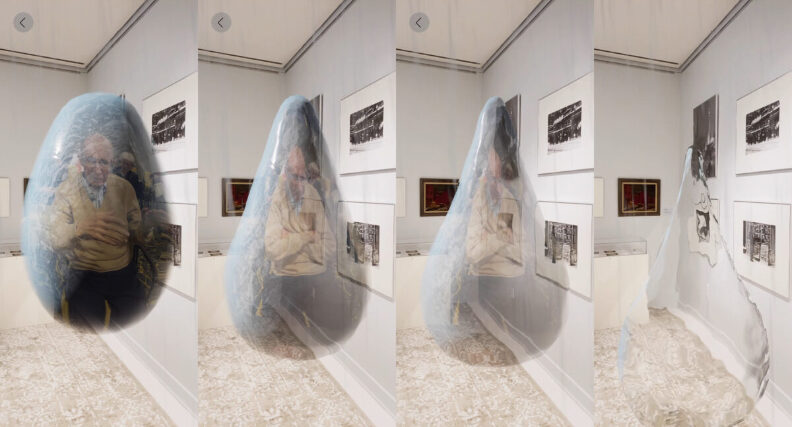Lynn Cazabon, Artist + Creative Researcher
PROJECT DESCRIPTION
Losing Winter is an augmented reality (AR) experience and site-specific participatory video archive conceived and developed by artist Lynn Cazabon in collaboration with the IRC. The project invites individuals to record and share personal memories of winter by reflecting on what we are collectively losing as climate change disrupts seasonal patterns.
These memories, sometimes dating back 50 years, are embedded in digital “ice drops” that appear suspended in space through the mobile AR app. As each video plays, the ice melts and dissolves, symbolizing the fading of childhood winter experiences.
Local community participation is central to the project, both through site-specific exhibitions and virtually via a free AR app available for iOS devices.
SIGNIFICANCE
While scientific data on climate change is extensive, personal narratives remain underrepresented in public conversations. Losing Winter bridges this gap by surfacing the emotional and cultural dimensions of a changing climate. Through storytelling, it fosters empathy and invites deeper engagement with what is at stake.
IRC COLLABORATION
The IRC developed a prototype using Unreal Engine, creating an immersive AR experience that integrates user-recorded video memories into melting digital ice drops. In the summer of 2020, we completed the design document and concept images.
The team created design documents and concept images, testing iterations of the project that allowed users to view the drops through their smartphone camera. The videos unfold in the users immediate surroundings evoking both personal and collective loss.
OUTCOMES
Completion funding was secured by the Saul Zaentz Innovation Fund. (2020)
The project was featured in five exhibitions to date including Losing Winter at the Maryland Center for History and Culture (2022).
The project is featured in An Ode to Disappearing Winter, Roel Neuraij, Witte Rook publications, Breda, NL, 2024
ADDITIONAL INFORMATION
Download the application: iOS
https://www.lynncazabon.com/losing-winter
RESEARCHERS + CREATORS
Original Concept and Creative Lead: Lynn Cazabon, Professor of Visual Arts
Project Oversight: Lee Boot, Director of the Imaging Research Center
Co-Investigators: Mark Jarzynski, IRC Technical Director for Software Engineering; Ryan Zuber, IRC Technical Director for Modeling and Animation; Tristan King, Interactivity Programmer
Sponsorship: Saul Zaentz Innovation Fund
Imaging Research Center, UMBC © 2024